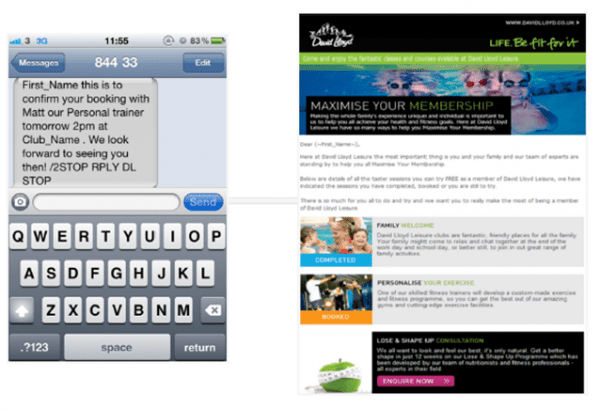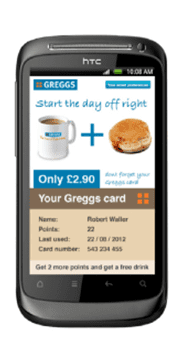Examples of Email campaigns designed to maximise ROI
2012 has proven that email is very much still king; achieving the highest ROI compared to any other channel, as well as the following impressive stats from DC Financial Insights, 2012.
- 77% of customers prefer to receive permission-based promotions via email
- Only 6% of customers preferring these messages via social media
- ROI of 3000% achieved through email in 2012
With a great strategy you can expect this to grow into 2013!. In this blog we will look at six key strategies for successful email marketing, illustrated by brands such as Topshop, Tetley, Cosmopolitan and innocent drinks.
6 Key Tips for maximising your email campaigns
- 1. Realise the importance of good data
Implications of sending to old or non-opted-in data should always be in a marketers mind. Spamhaus monitor senders and have the ability to block IPs with ISPs so remember to protect your sending reputation, and be savvy about it.
Consider getting a list health check-up, growing your data organically, making your sign up process accessible, encouraging email sign up via social and creating re-engagement campaigns.
By practicing this type of activity you will be on track to maintain a positive sender reputation, and keep on the good side of Spamhaus.

- 2. Compliment email strategies with SMS
SMS is a fantastic way to get a quick, instant message or reminder to customers, for example the start of a flash sale or exclusive offers of booking confirmation.
A massive 90% of SMS are read in the first 15 minutes of being received, so you can be sure that your message will be timely.
David Lloyd are a great example of using SMS and email, particularly when using SMS to complement their new member offering.

Due to the increasing amount of time spent online on mobile technology, mobile optimisation is now a vital element of campaign strategy for many brands. To stand out from the crowd be clever with your optimisation; target recipients with personalised content at the right place at the right time. Powerful stuff!.
Customers transacting on mobile grew rapidly from 19% in 2011 to 34% in 2012, however it is important to remember not to alienate your desktop users.
Therefore ensure that your emails will render on mobile and desktop technology to keep everyone happy. If you have the budget you can do this by using responsive design templates, if not then follow these three pointers:
- Make sure its 300 - 400px wide
- Make the text larger so it is easily readable, e.g. min 12px Arial
- Make the images smaller in file size
Greggs do mobile optimisation brilliantly, in this example not only does their email render perfectly on a mobile device, but they have utilised targeting within their campaign. Greggs know what busy commuters are concerned with at 7.30am, meaning that this email is received at the perfect time.
- 4. Measure success – long and short term goals
It’s all well and good creating amazing campaigns, but how are you measuring the success? Short term goals such as clicks, opens, open outs and conversions are often the focus. However remember not to overlook long term goals such as the lifetime value of your recipient, engagement, referrals and the virality of your campaigns.

- 5. Merging online and offline channels
Online and offline channels should be best friends, so consider using them to complement one another as opposed to treating them entirely separately. Digital makes up 30% of the Financial Times’ total revenue, so ensuring that their online and offline channels are merging is increasingly important to them.
Retail is a great example of merging the two channels; if you are a retailer why not consider capturing data in-store? Customer purchase history can then be used to personalise your email campaigns.

- 6. Integrate email and social media
Integrating email and social media is becoming increasingly vital for marketing campaigns, and is also surprisingly achievable. Embrace social media and take the opportunity to get creative, don’t just add social share buttons to your email, after all it is unlikely recipients will want to share your entire email. Instead opt for adding social share links on individual articles and pieces of content, this way recipients can pick and choose what they share to their network.
Innocent is a leading brand within social media and a great example of how to utilise social share within emails. In the example below they encourage social sharing by instructing recipients to ‘share me’, as well as giving an explanation of the sharing process for those who are less social-savvy. Recipients like to receive straight forward call to actions, so make social sharing as easy as possible.

Innocent are also a great example of how email can increase social engagement by getting recipients hooked into your social media channels immediately.
When recipients sign up to your newsletter they are in a state of high brand engagement. Take advantage of this by sending out an instant welcome email, suggesting that they check your brand out on Facebook, Twitter, YouTube or Pinterest. Recipients are far more likely follow this call to action when your brand is fresh in their minds.
Social media can also be utilised to capture data on your prospects - speak to your ESP about creating a sign up form on Facebook that posts data straight into your newsletter list that can trigger the welcome email.


Thanks to Jade Tanner, an Account Director at
Pure360. She has been working with Pure360 since 2009 looking after our lovely clients. Before that she was working with Heart Radio. You can follower her on
Twitter or connect on
LinkedIn.










 Thanks to Jade Tanner, an Account Director at
Thanks to Jade Tanner, an Account Director at 


